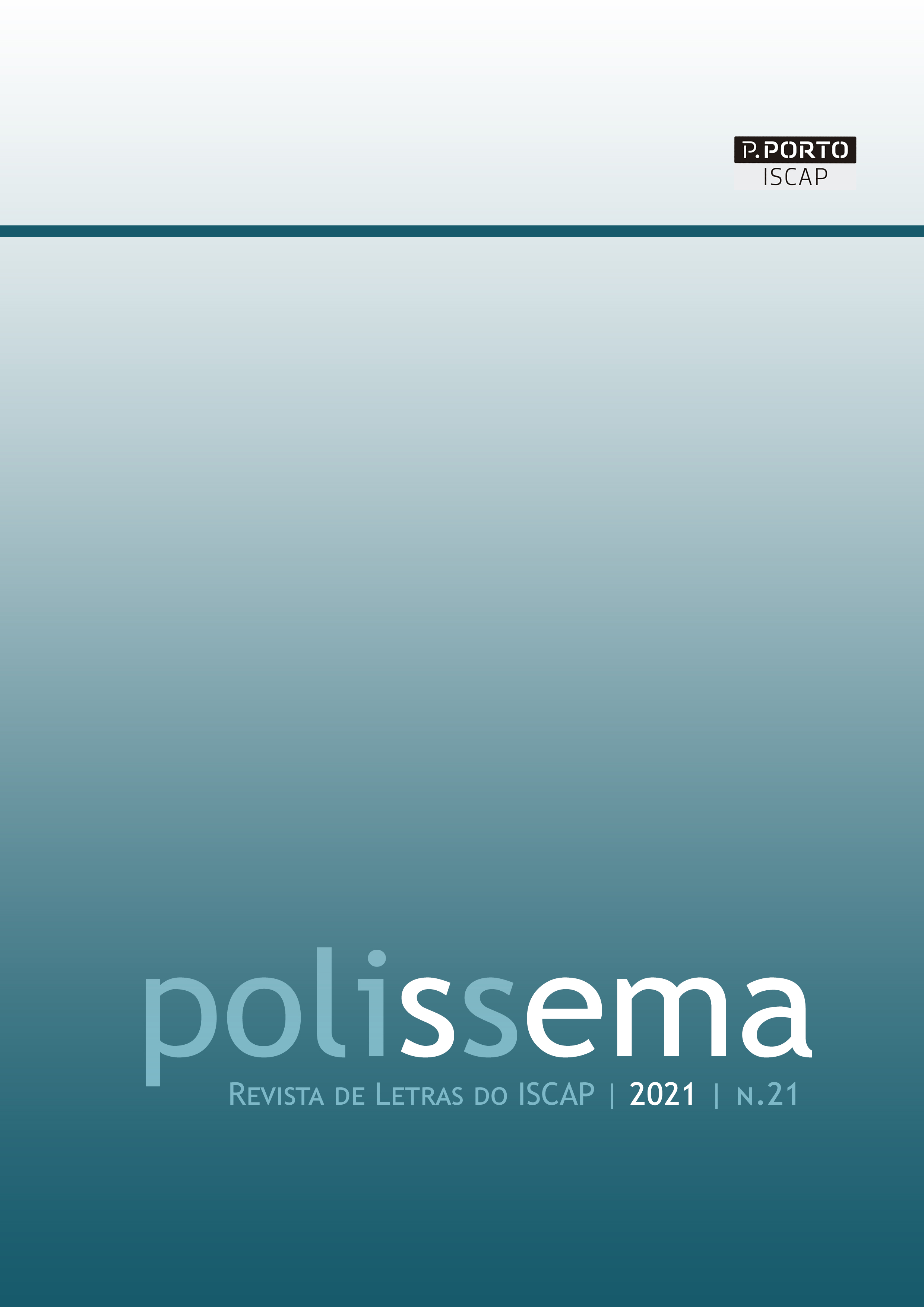TRANSLATED VISUAL GUIDES AIMED AT TOURISTS: CONVEYANCE OF THE VISUAL TEXT
DOI:
https://doi.org/10.34630/polissema.vi21.3845Palabras clave:
touristic texts, maps, translation, localisation, institutional touristic sponsoringResumen
This paper deals with the translation of the touristic website genre and more specifically the localisation of websites. Furthermore, the use of maps online as multilingual guides to attract visitors will be discussed. Six websites, one per each of the most important cities of the Autonomous Community of Galicia have been analysed. This study will reveal how several linguistic and visual strategies were involved in the creation of colourful, inspiring and relaxing websites which make use of concise texts and maps throughout some of the thematic links. Also, the role of public institutions will be accounted for since these have a major impact on the resources available to create these visual guides and promote touristic destinations.
Citas
Adab, B. (2000). “Towards a More Systematic Approach to the Translation of Advertising Texts”. In A. Beeby, D. Ensinger & M. Presas (eds.), Investigating Translation (pp. 223-234). John Benjamins Publishing Company.
Agorni, M. (2012a). “Questions of Mediation in the Translation of Touristic Texts”. Altre Modernità, n. p. Retrieved from: https://riviste.unimi.it/index.php/AMonline/article/view/1963.
Agorni, M. (2012b). “Tourism communication: the translator’s responsibility in the translation of cultural difference”. PASOS Revista de Turismo y Patrimonio Cultural. 10, 4, 5-11. http://doi.org/10.25145/j.pasos.2012.10.048.
Cappelli, G. (2007). “The translation of tourism-related websites and localization: problems and perspectives”. In A. Baicchi (ed.), Voices on Translation. RILA Rassegna Italiana di Linguistica Applicata (pp. 97-116). Bulzoni.
Dann, G. (1996). The Language of Tourism. Cab International.
Durán, I. (2012). “Analysing Common Mistakes in Translations of Tourist Texts (Spanish, English and German”. Onomázein, 26, 335-349. Retrieved from https://dialnet.unirioja.es/descarga/articulo/4419765.pdf.
Fuentes, A. (2016). “Branding and Selling a country through translated tourism advertising: Spain’s image”. Revista de Lenguas para Fines Específicos 22.2, 84-103. http://dx.doi.org/10.20420/rlfe.2016.113.
Fuentes, A. & Kelly, D. (2000). “The Translator as Mediator in Advertising Spanish Products in English-Speaking Markets”. In A. Beeby, D. Ensinger & M. Presas (eds.), Investigating Translation (pp. 235-242). John Benjamins Publishing Company.
Grabler, F. et al. (2008). “Automatic Generation of Tourist Maps”. SIGGRAPH 100, 1-11. Retrieved from: vis.berkeley.edu/papers/tmaps.
House, J. (1997). Translation Quality Assessment: A Model Revisited. Günter Narr.
López-González, R. C. (2015). “Post-Tourism Online: Bridging the Cultural Gap between Describing a Galician City and Attracting Foreign Visitors”. In D. Gallego-Hernández (ed.), Current Approaches to Business and Institutional Translation. Proceedings of the International Conference on Economic, Business, Financial and Institutional Translation (pp. 41-51). Peter Lang.
López-González, R. C. & García, E. (2015). “To Eat or not to Eat…In Vigo. The Translator Solves the Dilemma”. Belas Infiéis, 4(1), 71-84. Retrieved from: http://periodicos.unb.br/index.php/belasinfieis/article/view/11313.
Nichols, B. (2015). The difference between Translation and Localization for Multilingual Website Projects (Definitions). Retrieved from: https://content.lionbridge.com/the-difference-between-translation-and-localization-for-multilingual-website-projects-definitions/.
Poncini, G. (2006). “The Challenge of Communicating in a Changing Tourism Market”. In O. Palusci & S. Francesconi (eds.) Translating Tourism: Linguistic/Cultural Representations, (pp. 15-34). Università degli Studi di Trento Editrice.
Pym, A. (2004). The Moving Text: Localization, translation, and distribution. Amsterdam: John Benjamins.
Pym, A. (2011). “Website Localization”. In K. Malmkjær & K. Windle (eds.) The Oxford Handbook of Translation Studies, (n. p.). Oxford University Press. DOI: 10.1093/oxfordhb/9780199239306.013.0028.
Sandrini, P. (2008). “Localization and Translation”. MuTra Journal, Vol 2, 167-191. LSP Translation Scenarios. Selected Contributions to the EU Marie Curie Conference Vienna 2007. H. Gerzymisch-Arbogast, G. Budin, G. Hofer (eds.). ATRC.
Santini, M. (2006). “Web pages, text types, and linguistic features: Some issues”. ICAME Journal, Vol. 30, 67-86.
Singh, N. & Pereira, A. (2005). The Culturally Customized Web Site. Customizing Web Sites for the Global Marketplace. Elsevier.
Suau, F. (2012). “El turista 2.0 como receptor de la promoción turística: estrategias lingüísticas e importancia de su estudio”. PASOS Revista de Turismo y Patrimonio Cultural Vol. 10, 4, 143-153. Retrieved from: http://doi.org/10.25145/j.pasos.2012.10.060.
Watkins, J. (ed.) (2002). The Guide to Translation and Localization. Preparing Products for the Global Marketplace. Lingo Systems and American Translators Association.
Wilkinson, M. (2005). “Discovering Translation Equivalents in a Tourism Corpus by Means of Fuzzy Searching”. Translation Journal 9, 4, n. p. Retrieved from: https://www.translationdirectory.com/article745.htm
Descargas
Publicado
Cómo citar
Número
Sección
Licencia
Derechos de autor 2021 POLISSEMA – Revista de Letras do ISCAP

Esta obra está bajo una licencia internacional Creative Commons Atribución-NoComercial-SinDerivadas 4.0.


